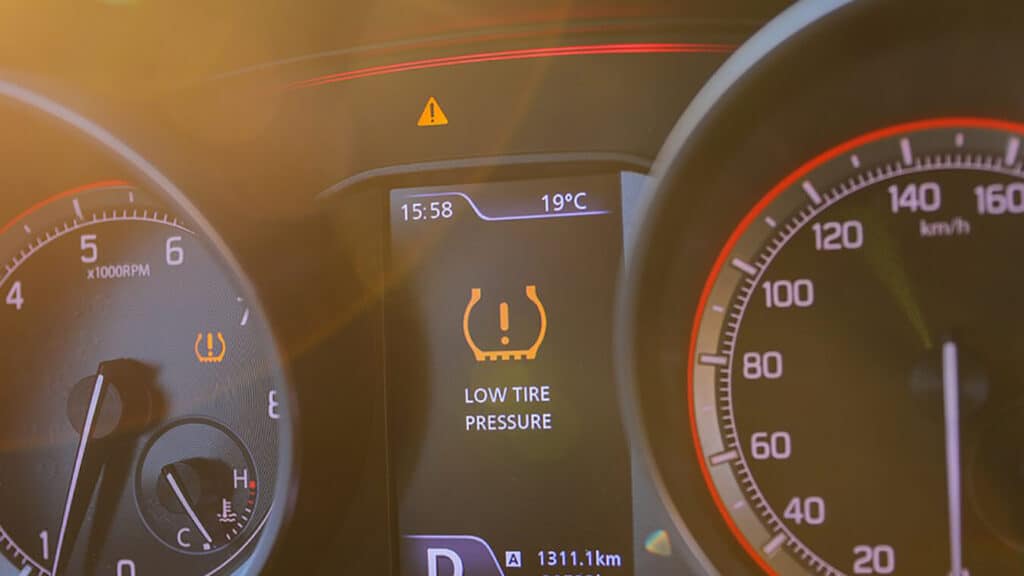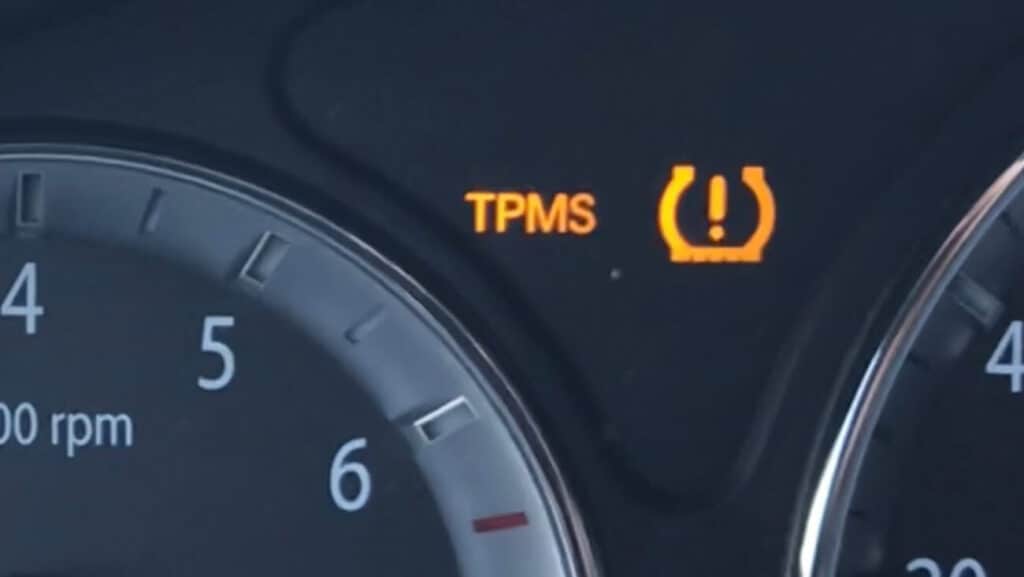Rolling into the Realm of TPMS
Starting our journey in the world of automotive safety, we’ll delve into the Tire Pressure Monitoring System (TPMS). A modern marvel, this system doesn’t just monitor air pressure; it’s a proactive protector of your tires, guarding against potential blowouts and ensuring optimal fuel efficiency.
TPMS Unveiled: Keeping Pressure Perfect for Peak Performance
The TPMS isn’t a modern-day whimsy but a calculated response to road safety. Originating from the need for stable driving conditions, TPMS ensures that every tire is at its optimum pressure, balancing your vehicle perfectly on the tarmac. So, when you’re gliding smoothly on the road, know that it’s this little genius silently ensuring a safer, efficient ride.
The inception of the TPMS can be traced back to increasing tire-related accidents, which put a glaring focus on tire safety. As its significance became undeniable, many countries transitioned into making the TPMS system a mandatory inclusion for all new vehicles.
The mechanics behind it are quite fascinating. Sensors, either strategically nestled within the tire or placed on the wheel, are the unsung heroes that tirelessly monitor tire pressure. The moment they sense something amiss, a deviation from the accepted norms, they instantly alert the driver. Such diligent monitoring yields tangible benefits on the road.
Properly inflated tires inherently reduce rolling resistance, which translates to enhanced fuel efficiency. Additionally, the optimal pressure not only guarantees an extended tire lifespan through even wear but also ensures that the vehicle remains under the driver’s control, especially in critical scenarios involving sudden turns or stops.
Moreover, there’s an environmental angle to consider. Enhanced fuel efficiency implies lesser emissions, aligning with global eco-friendly drives. Also, with extended tire life, there’s a reduction in the frequent need for replacements, leading to resource conservation.

Reading the Signs: When TPMS Lights Illuminate Your Dashboard
Temperature-Driven Alerts
• Cold Snaps and Pressure Drops: A drop in external temperatures can cause tire pressures to decrease, leading the TPMS to light up.
• Heat Waves and Pressure Spikes: Conversely, during hotter days, tire pressures can rise, which might trigger the system.
Sensor Battery Life
• Natural Degradation: Over time, the battery within the TPMS sensor can weaken or die, causing the light to illuminate.
• Battery Lifespan: Most TPMS batteries last between 5-10 years. A consistent TPMS light might signal the end of a battery’s life.
Faulty Sensors or Malfunctions
• Wear and Tear: Physical damage or the rigors of daily driving can affect a sensor’s integrity.
• Electronic Glitches: Occasionally, a sensor might malfunction due to electronic issues or even software bugs.
Rapid Air Loss or Punctures
• Quick Deflations: A sharp object on the road can lead to rapid air loss, quickly activating the TPMS light.
• Slow Leaks: Even minor punctures can cause a slow decrease in pressure over time, signaling an alert.
Mismatched Tire Pressures
• Inconsistent Inflation: If one tire is inflated to a different pressure than the others (even if within safe limits), it might trigger the TPMS.
• Rotation Reminders: After rotating tires, if pressures aren’t equalized, the system can alert the driver.
External System Interference
• Radio Frequency Interruptions: Nearby devices or certain environments can cause radio frequency interference, leading to false TPMS alerts.
• Other Vehicle Systems: Sometimes, other electronic systems in the car can interfere with the TPMS, causing it to illuminate.
System Resets and Calibrations
• Post-Maintenance Ignition: After certain maintenance tasks or tire replacements, the TPMS might light up until it’s reset or recalibrated.
• Manual Resets: Some vehicles might require a manual TPMS reset after adjusting tire pressures.
Safety First and Foremost
• Early Warning System: The TPMS acts as an initial line of defense, alerting drivers to potential tire-related issues before they become severe.
• Peace of Mind: Even if tires look fine, the TPMS ensures that any potential inconsistencies or threats are immediately brought to the driver’s attention.
To Drive or Not to Drive? Assessing Risks with an Active TPMS Alert
A persistent light could indicate a significant drop in tire pressure, risking safety. So, while you might make it to the nearest service station, longer journeys demand immediate attention. Safety, after all, should never be a gamble.
Every time that TPMS alert pops up, it’s essential to conduct a primary assessment. Start with a rudimentary visual inspection of the tires, scouting for any evident damages or deflation. If accessible, deploy a tire pressure gauge to cross-verify the alert against the tire’s actual pressure. If you still contemplate driving, especially for shorter distances, it’s crucial to tread with caution.
Avoid reaching highway speeds and make your way to the closest service station or mechanic for a comprehensive inspection. But it’s essential to be aware of the potential risks. A severely deflated tire, when subjected to high speeds, could catastrophically blow out. Also, a drop in tire pressure can compromise the vehicle’s handling, making it unpredictable in emergencies.
For those who love the open road and longer journeys, any TPMS alert should be addressed and rectified before setting out. It’s also prudent to always have a set of essentials handy: a tire pressure gauge and either a tire inflator or a spare tire. Lastly, as an informed driver, it’s invaluable to be familiar with your vehicle.
Dive into the vehicle’s manual periodically to refresh your understanding of its specific TPMS intricacies. Also, stay in the loop with the latest in TPMS tech and best practices. After all, staying updated translates to safer roads for everyone.

Mythbusting: Why TPMS Flags an Alert Even with Perfect Tires
Temperature Dynamics
• Seasonal changes can result in considerable temperature variations.
• Cold weather can lead to tire pressure reductions, while hotter conditions might cause an increase.
• Even a change of just 10 degrees can influence tire pressure by 1 psi.
Altitude Adjustments
• Driving to significantly higher or lower altitudes can cause pressure fluctuations.
• Higher altitudes might decrease tire pressure due to the reduced atmospheric pressure.
Inherent System Sensitivity
• TPMS is designed to be hypersensitive to ensure maximum safety.
• This high sensitivity can sometimes result in alerts even with minor pressure changes.
Sensor Calibration and Tolerances
• TPMS sensors are calibrated for specific pressure ranges.
• Variances outside these ranges, even if minute, can prompt an alert.
External Interferences
• Radio frequency interferences or electronic disruptions can occasionally confuse the TPMS.
• This can lead to false alarms, even if the tire pressure is optimal.
Tire Tales: Resetting, Replacing, and Recognizing the Role of TPMS Sensors
While resetting is often a simple process, recognizing when the sensor is acting up versus a genuine tire issue is key. It’s this delicate dance between technology and tire health that keeps our ride smooth:
Resetting Fundamentals
• Typically, vehicles come with a direct or indirect method of resetting.
• Direct TPMS uses physical pressure sensors in each tire.
• Indirect TPMS gauges pressure by monitoring wheel speed sensors.
Sensor Health Checks
• Over time, sensors may degrade or malfunction.
• Regular diagnostics can catch early signs of sensor wear or battery depletion.
Sensor Replacements
• Depending on make and model, sensor batteries can last 5-10 years.
• When nearing the end of their lifespan, a proactive replacement can avoid sudden failures.
Differentiating Sensor Errors vs. Genuine Tire Issues
• While sensors can err, repeated alerts might indicate a genuine tire problem.
• Unaddressed tire issues can lead to reduced fuel efficiency, uneven tire wear, or even blowouts.
Importance of Calibration
• Post maintenance or tire replacements, sensors should be recalibrated.
• Proper calibration ensures accurate readings and reduces the chance of unnecessary alerts.
Technology and Tire Harmony
• TPMS serves as a bridge between advanced tech and basic tire mechanics.
• This union ensures safety and provides timely warnings, maximizing vehicle performance.
Inside the Wheel Well: Delving into TPMS Sensor Locations and Lifespan
The driving experience is seamlessly anchored by the TPMS system, thanks to its precisely positioned sensors. Located either within the tire’s confines or affixed to the wheel, these sensors stand as vigilant watchmen. Their duty? Monitoring tire pressure and sending swift alerts when there’s a shift from the desired levels.
Yet, just as heroes have their vulnerabilities, these sensors have their limits. While engineered for a robust lifespan, spanning numerous years, they don’t escape the wear and tear typical of vehicular components. Their efficacy can diminish, influenced not just by their age, but also by factors like one’s driving patterns and external environmental elements. Hence, scheduled assessments are the key to averting sudden and unplanned hitches.

Sensor Swap: Estimating Costs and Considering Replacement with New Tires
Every time you consider getting new tires, the TPMS sensors might not need an immediate replacement. But there’s wisdom in being vigilant about their condition, especially as they approach their typical end-of-life. It’s a game of balance.
Swapping tires? It’s worth giving a nod to those TPMS sensors. It’s true they don’t demand a change every time you switch out your treads, but a keen eye on their condition, particularly as they edge closer to their expected sunset years, is judicious.
While on the subject of TPMS sensors, one cannot overlook the financial angle. Sure, they come with a price tag, but their value transcends mere dollars and cents. Ensuring they’re in tip-top shape is akin to purchasing assurance — a guarantee that the unexpected won’t catch you unawares, stalling your journey. Keeping these sensors in prime condition is, in many ways, a road-tripper’s best insurance policy.
The Art of Ignorance: When and When Not to Sideline TPMS Alerts
The illumination of the TPMS light isn’t always an emergency in waiting. At times, external factors like sudden temperature drops can cause temporary blips in the system, resulting in brief, non-urgent alerts.
However, one must never grow too complacent. If the light remains persistent or keeps coming back, it’s signaling a deeper concern. Being dismissive might spell trouble, but staying attuned to these alerts ensures you’re always ready to tackle any on-road tire-related challenges.
Pumped Up on TPMS Knowledge – Our Ride Comes to a Rest
Our exploration into the TPMS realm has been enlightening. From understanding its essence to recognizing its alerts, we now stand equipped to tackle any tire pressure challenge on our driving adventures.
